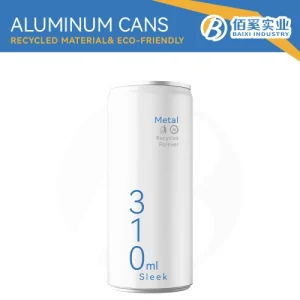Diameter is also a huge factor to the style and functionality of aluminium cans, from its appearance to production capability. Beverage cans—most commonly finished at 202 (2.13 in) and 211 (2.25 in)—may vary based on brand design selection and associated packaging requirements. The slimmer 202 diameter, for example, is frequently used for energy drinks and other specialty beverages since its creates a more modern and sleek aesthetic that matches brand imagery of products intended to stand out on the shelf.
Diameter is also important not only for structural integrity but for stacking, too. The smaller diameter also gives the can strength to hand higher internal pressures from carbonated drinks. This is especially critical for beer cans, which can see an internal pressure of up to 90 psi. A suitable diameter givesa can its durability without needing to add thicker material that would increase the cost of production.
Bigger sizes like the 211 standard are for beer and soft drinks, because they contain a larger volume without taking much extra height. This diameter enables a wider format across the printing surface area and presents better branding as well as labels more visible to consumers. Brands leverage this added real estate to provide further information or colorful graphics that grab a consumer's eye. Studies conducted under Can Manufacturers Institute found that, 70% of consumers said they were more likely to take notice of a product with in-depth packaging which shows presenting in a wider diameters is adding greater visual credit.

It can also play a significant role in affecting production and transportation costs as diameter itself. The rollout of a wider can means that more product fits into each can, which consequently reduces the cost of packaging and shipping on mass distribution. Wider cans also take up more space, limiting the number that can be pallet stacked or fit inside a vending machine. Thus, a tradeoff between cost versus function needs to be considered by the company and it is not surprising that many suppliers ranging from large multinational firms to small local players provide customized optional beer can diameter.
Can diameter is one of the most stress-inducing considerations in can design, with ramifications ranging from branding to logistical optimization. Brands can opt for a decent diameter to manufacture a product that is attractive, durable, and economical while covering not only aesthetic but also practical needs.